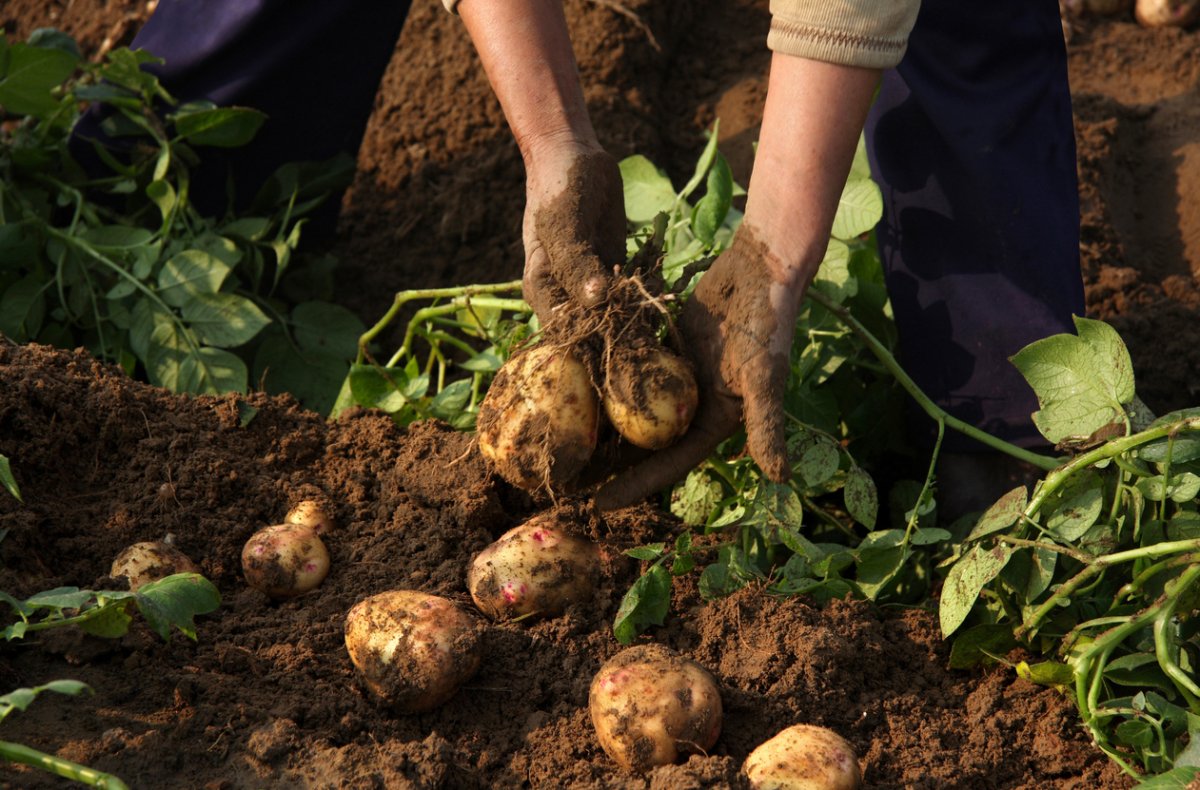We may earn revenue from the products available on this page and participate in affiliate programs. Learn More ›
Plants that grow well together can help each other thrive. The symbiotic relationship that occurs when companion-planting vegetables and herbs near potatoes is a win-win for all.
Each plant has unique advantages. Some can grab nitrogen from the air and add it to the soil via bacteria on the surface of their roots. Others specialize in repelling pests or keeping diseases at bay. We consulted with Dick Zondag, master gardener, past president of Jung Seed, and member of the National Garden Bureau, to learn more about companion plants for potatoes.
No matter your climate zone, it makes sense to be organized with your companion planting. Here are some practical ideas for what to plant near the potatoes in your garden.
Potato Companions: Pests, Disease, Beneficial Insects
Favorable companion plants for potatoes have several beneficial properties. Companion planting specific vegetables and herbs with potatoes can help to ward off pests and disease, increase biological diversity, and attract pollinators such as bees. Here are some ideas for what to plant alongside potatoes.
Field Peas (Pisum sativum)
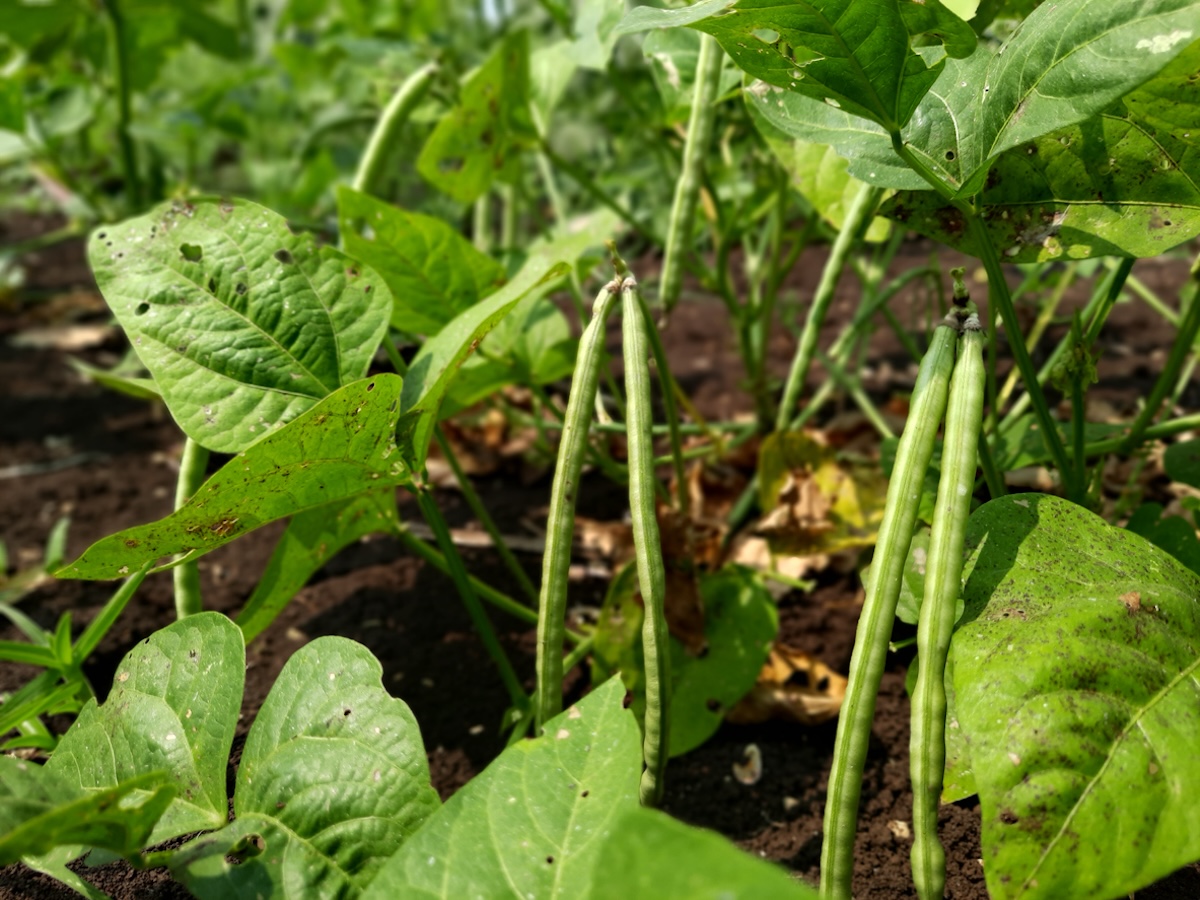
When planted alongside potatoes, field peas are an excellent companion crop to increase diversity in the garden. Having variety in cover plants helps attract beneficial insects such as pollinators while controlling pests without pesticides. Additionally, all stages of field peas are edible, from the blossoms to the young pods.
Best For: Creating additional diversity in the garden and for a great snack.
Our Recommendation: Get field pea seeds at Amazon for $8.99
Basil (Ocimum basilicum)
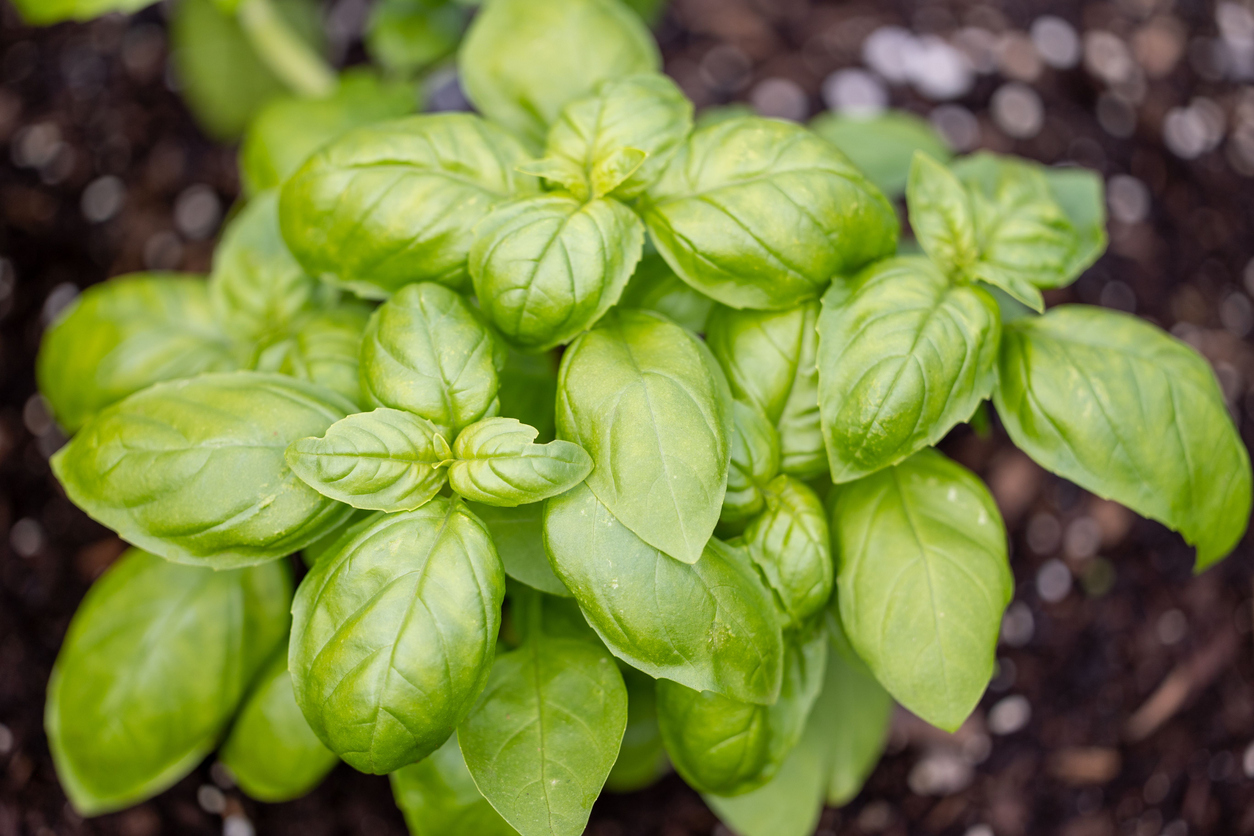
When it comes to pests in the garden, it’s best not to give them a warm welcome. One strategy for dealing with unwanted bugs is to find dual-purpose plants well suited for pest control while being good companion plants with potatoes. In such cases, basil is a terrific option. This tasty yet versatile herb helps repel beetles, flies, and mosquitos, and according to Zondag, basil is a terrific companion plant for potatoes.
Best For: Repelling bugs alongside potatoes and as a fresh herb for cooking.
Our Recommendation: Get basil seeds at Jung Seed for $3.95
Chives (Allium schoenoprasum)

Potatoes love to be near other plants that help to repel insects, which is why chives can be an excellent addition to your garden. This beautiful herb helps to ward off Japanese beetles, and, as a bonus, it’s a delicious cooking ingredient.
Consider planting chives alongside your potatoes if you want a dash of sharp, spicy freshness in the garden. According to Zondag, companion plants such as chives can be an important part of a chemical-free pest control strategy.
Best For: Repelling insects while serving as a staple herb in the kitchen.
Our Recommendation: Get chive seeds at Amazon for $7.69
Garlic (Allium sativum)
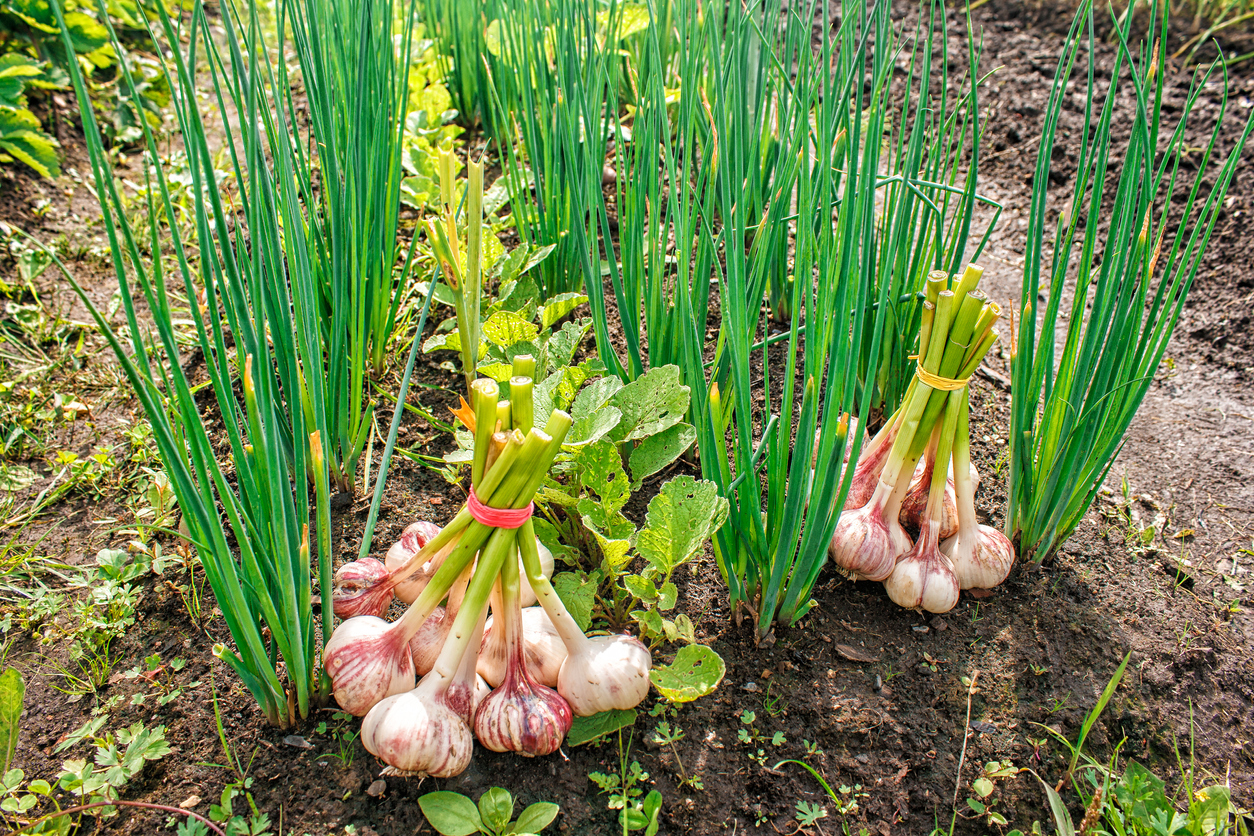
If repelling a variety of flying and crawling insects from potatoes and other plants is your objective, garlic is a crowd favorite. This garden staple packs a flavor punch in many recipes, and according to gardening expert Zondag, garlic helps to fend off codling moths, beetles, peach borers, and other annoying pests. For these reasons, planting garlic next to potatoes is a common-sense move, so consider this ordinary herb with extraordinary properties as an addition to your garden’s potato patch.
Best For: Helping stave off a variety of winged and crawling insects.
Our Recommendation: Get garlic bulbs at Amazon for $13.49
Marigold (Tagetes spp.)
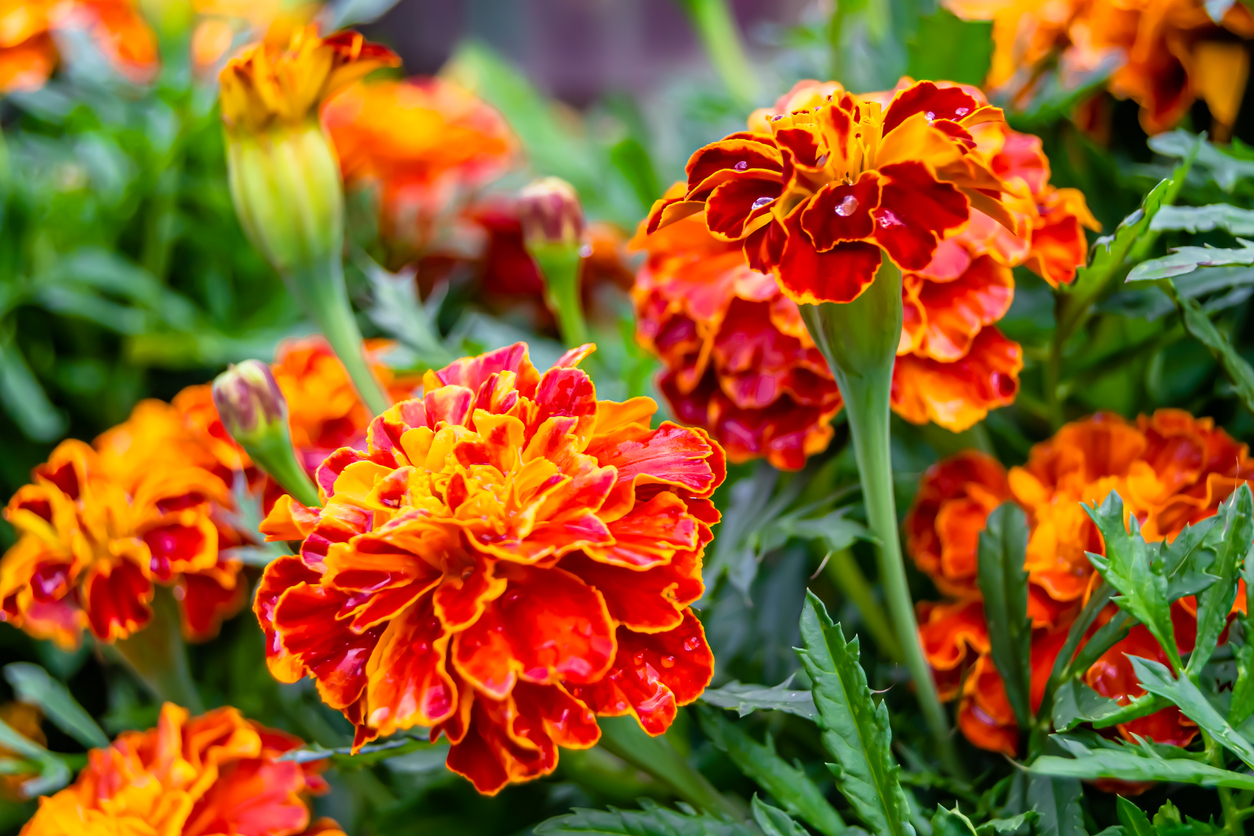
Marigold is a great companion for most plants, according to Zondag. Potatoes are no exception, as marigold adds a splash of color and texture to the garden, plus it helps repel insect pests. Additionally, animals such as deer tend to avoid marigolds due to their pungent aroma. This versatile companion plant for potatoes can help liven up your garden visually while serving a multipurpose, beneficial role.
Best For: Companion planting for several types of plants and repel animals as well as insects.
Our Recommendation: Get marigold seeds at Jung Seed for $5.35
Potato Companions: Soil Structure, Nutrients, Flavor
Some potato companion plants help improve soil by adding essential nutrients, not competing with potatoes for nutrients, or enhancing the flavor of your spuds. Try these strategic plant pairings to help grow healthier and tastier potatoes in your garden.
Clover (Trifolium spp.)
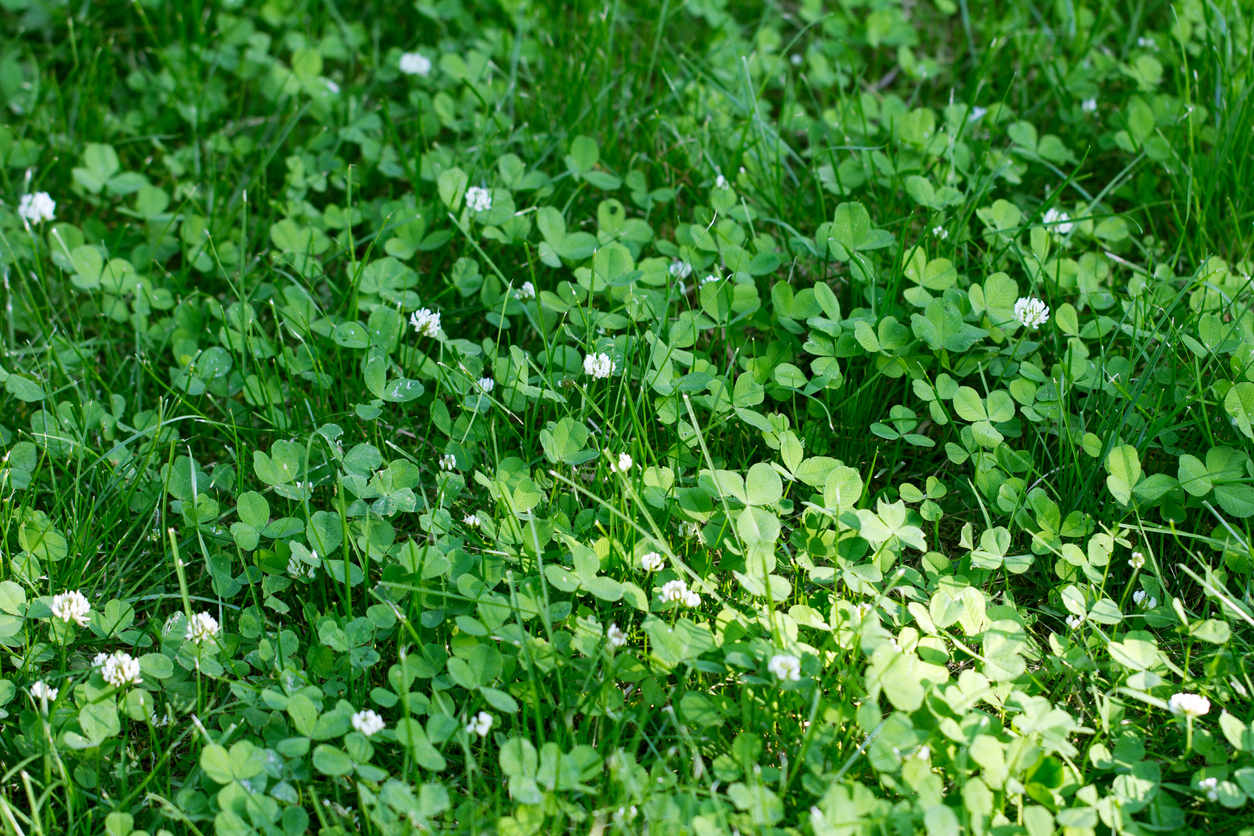
A living mulch such as clover can be beneficial when planted between potato beds. Far from being a weed, clover is a pint-sized champion that packs a punch in terms of nutrients. According to the University of Georgia, it creates natural fertilizer for potatoes by harvesting nitrogen from the air and adding the element to the soil. When used for potato companion planting, clover also helps to crowd out other weeds.
Best For: Potato companion planting between rows to add nitrogen to the soil.
Our Recommendation: Get clover seeds at Jung Seed for $7.45
Pole Beans (Phaseolus vulgaris)
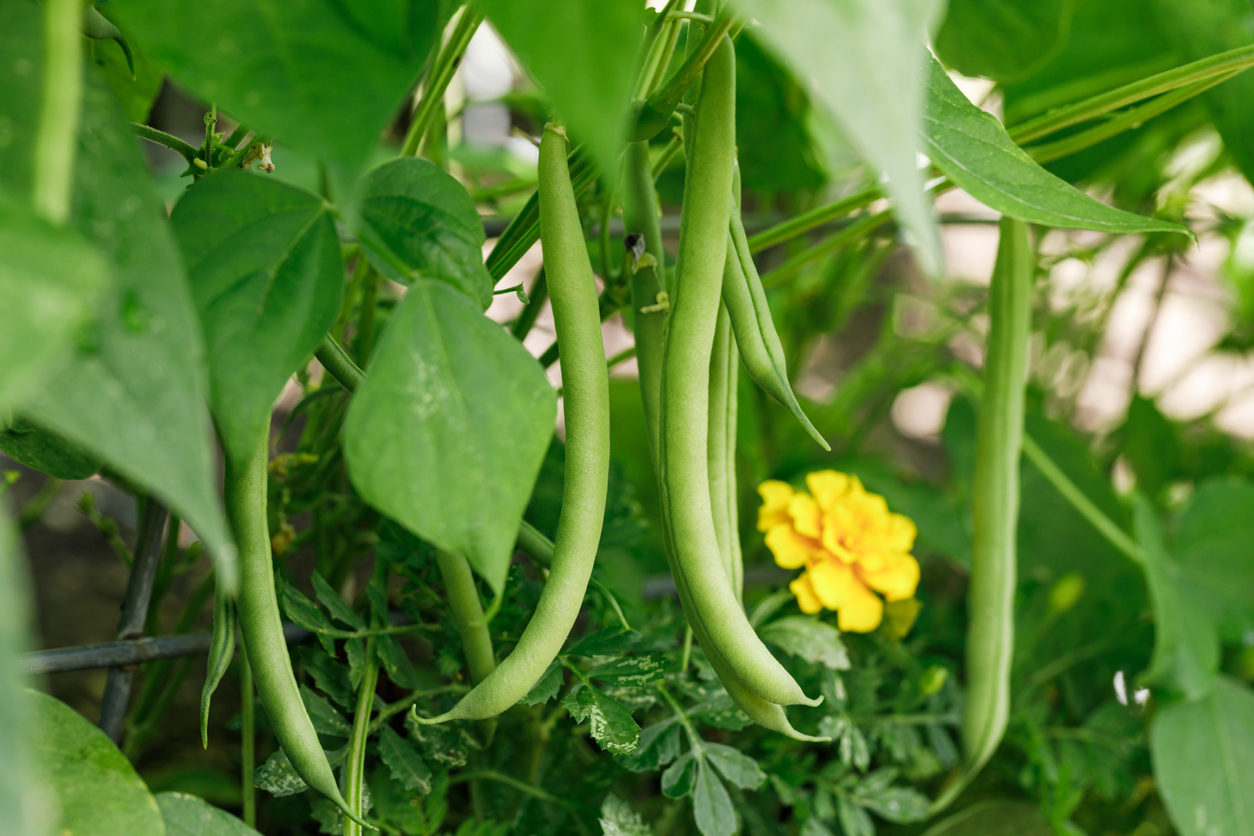
Pole beans are a great addition to your garden, whether you’re planting potatoes or a Three Sisters garden. Some vegetable companion plants act as quasi-fertilizers, releasing nitrogen they fix from the air into the soil. Zondag notes that beans and other legumes serve this purpose as they improve the soil around them. Just make sure the legumes don’t shade your potatoes too much. For this reason, place your taller plants at the north end of your garden.
Best For: Enhancing soil quality by harvesting nitrogen and transferring it to the soil.
Our Recommendation: Get pole bean seeds at Amazon for $4.94
Sweet Corn (Zea mays)
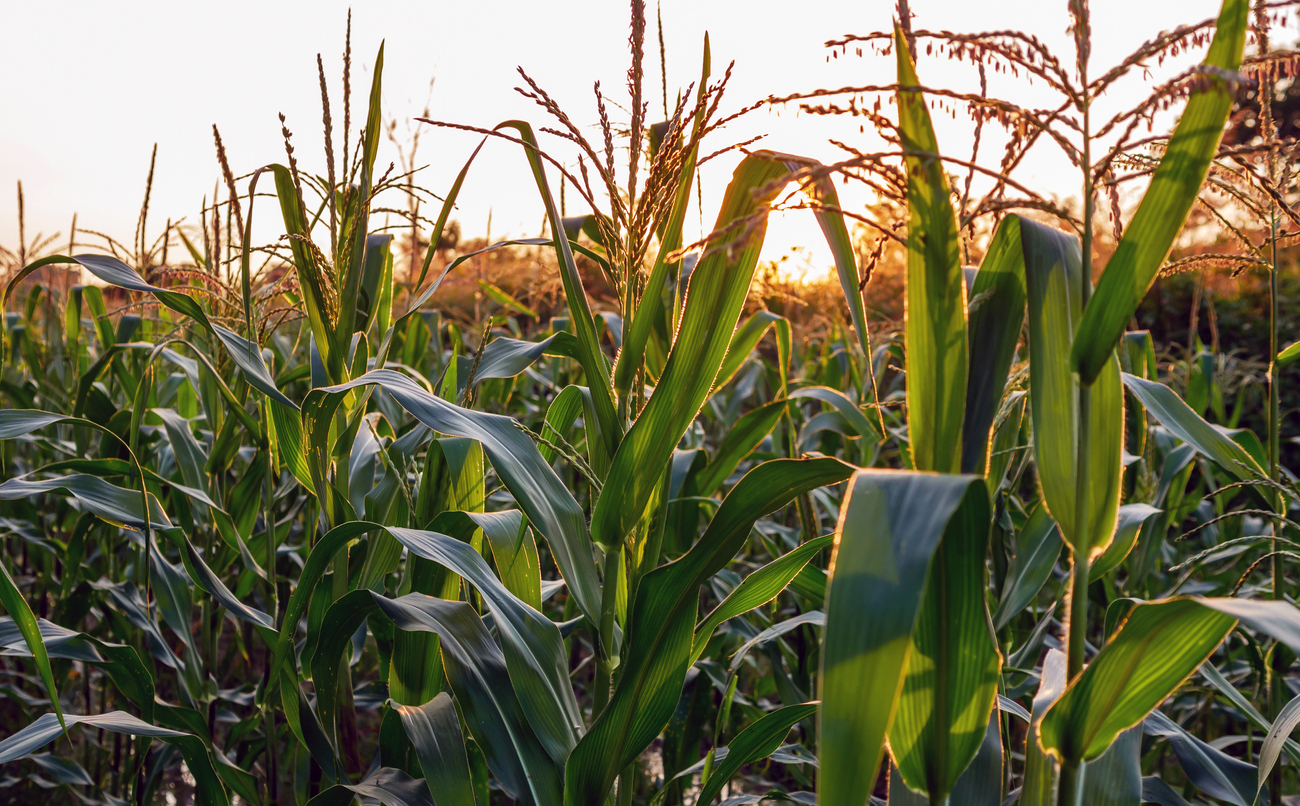
Sweet corn is believed to enhance the flavor of potatoes when seeded nearby as a companion plant. According to plant expert Zondag, Zea mays can also help ward off some common potato diseases. He notes that when planting sweet corn as a companion for potatoes, ensure the height of the corn stalks doesn’t shade the potato plants.
Best For: Enhancing potato flavor and helping with disease protection.
Our Recommendation: Get sweet corn seeds at The Home Depot for $19.09
Horseradish (Armoracia rusticana)
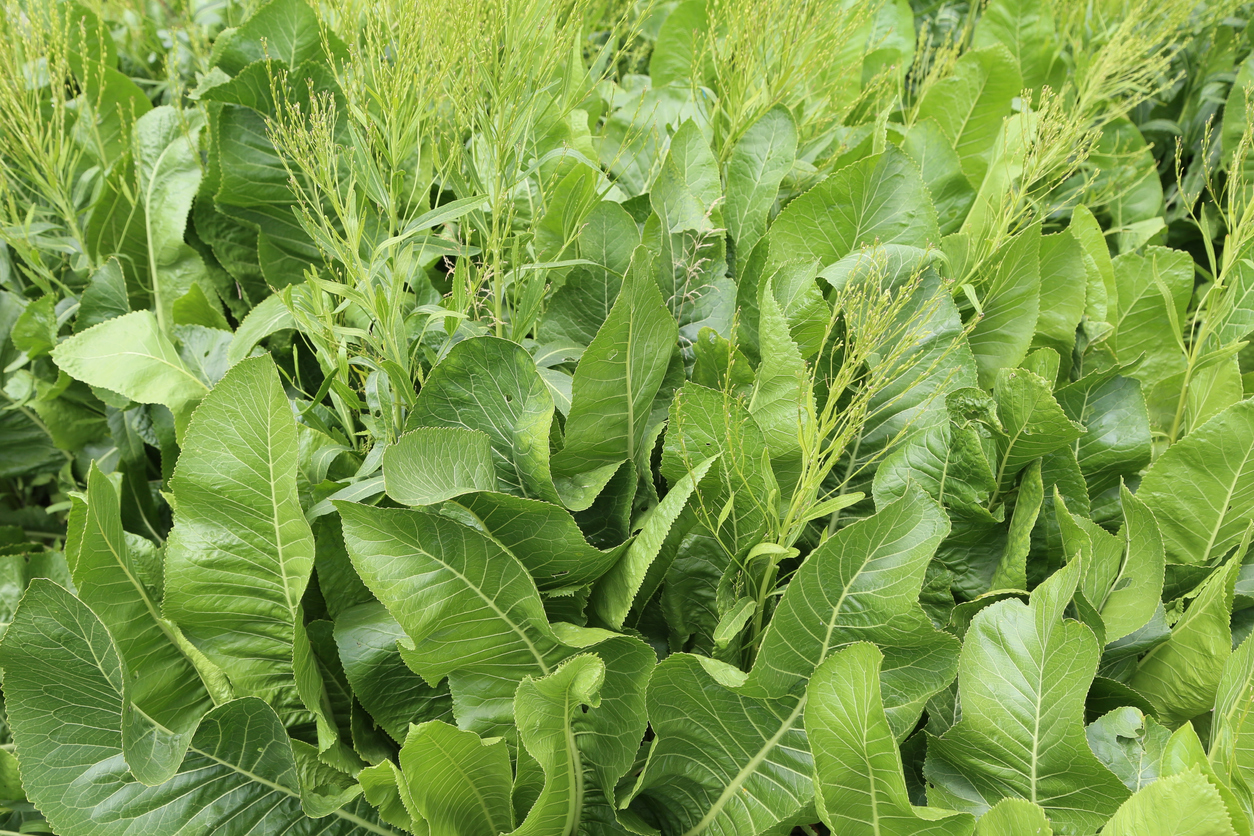
According to Zondag, this fiery herb is among potato plant companions that improve the latter’s flavor. To prevent problems when rototilling, plant perennial vegetables such as potatoes, horseradish, rhubarb, asparagus, strawberries, and perennial herbs in the same area.
Best For: Improving the flavor of potatoes in the garden while repelling pests.
Our Recommendation: Get horseradish roots at Park Seed for $21.95
Cabbage (Brassica oleracea)
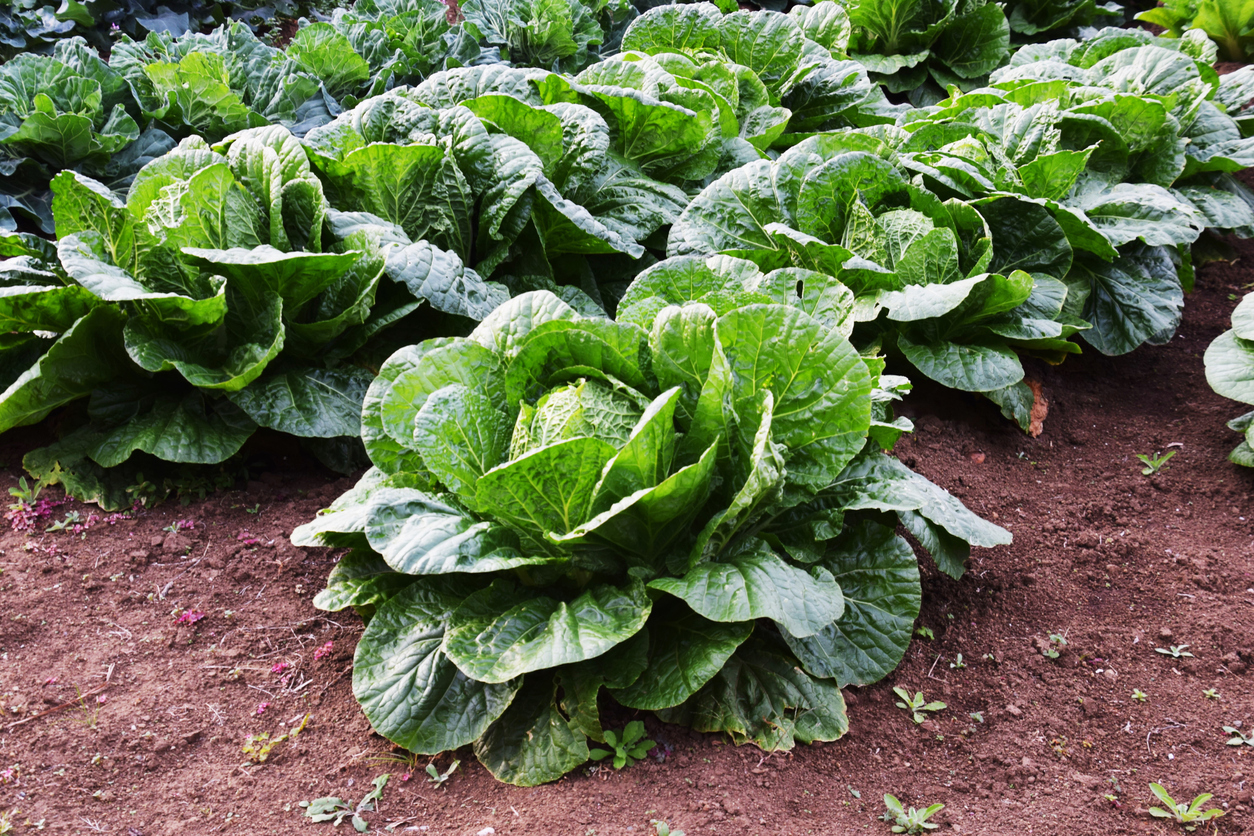
Cabbage makes an excellent companion plant for potatoes. Its shallow root height enables potatoes to reach deeper into the soil for nutrients, and the cabbage roots help to break up the soil, aiding in aeration. Cabbage does best as a potato companion when planted with aromatic herbs such as sage, dill, chamomile, celery, rosemary, and peppermint. As a non-interfering vegetable companion plant for potatoes, cabbage is a winner.
Best For: Improving soil quality without interfering with the growth of potatoes.
Our Recommendation: Get cabbage seeds at Jung Seed for $3.95
Potato Companions: Space, Conditions, Growth Habit
Certain companion plants complement potatoes, whether through similar or opposite growth habits or by providing spatial benefits such as size, depth, or shade. The perfect plant partners, like the ones listed below, can help maximize your garden’s potato harvest.
Carrots (Daucus carota subsp. sativus)
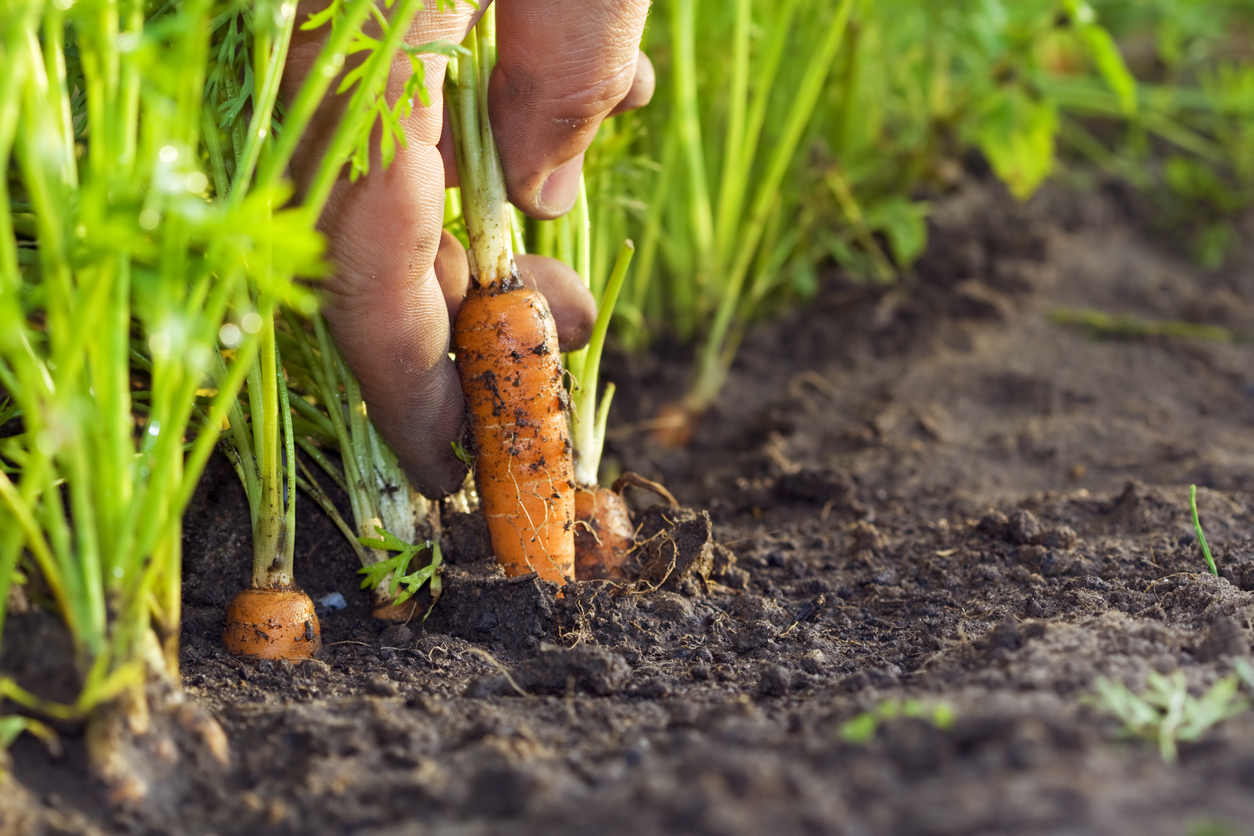
Potato companion plants with large taproots such as carrots bulldoze their way through the soil. By offering a different type of root system in a garden, carrots can help to reduce the impact of soil compaction. Soil that is loose and well aerated can help to transfer nutrients and moisture down to deep potato roots, helping the plant to thrive.
Best For: Creating extra space in the soil to enable moisture and nutrients to reach deep potato roots.
Our Recommendation: Get carrot seeds at Amazon for $9.99
Dead Nettle (Lamium)
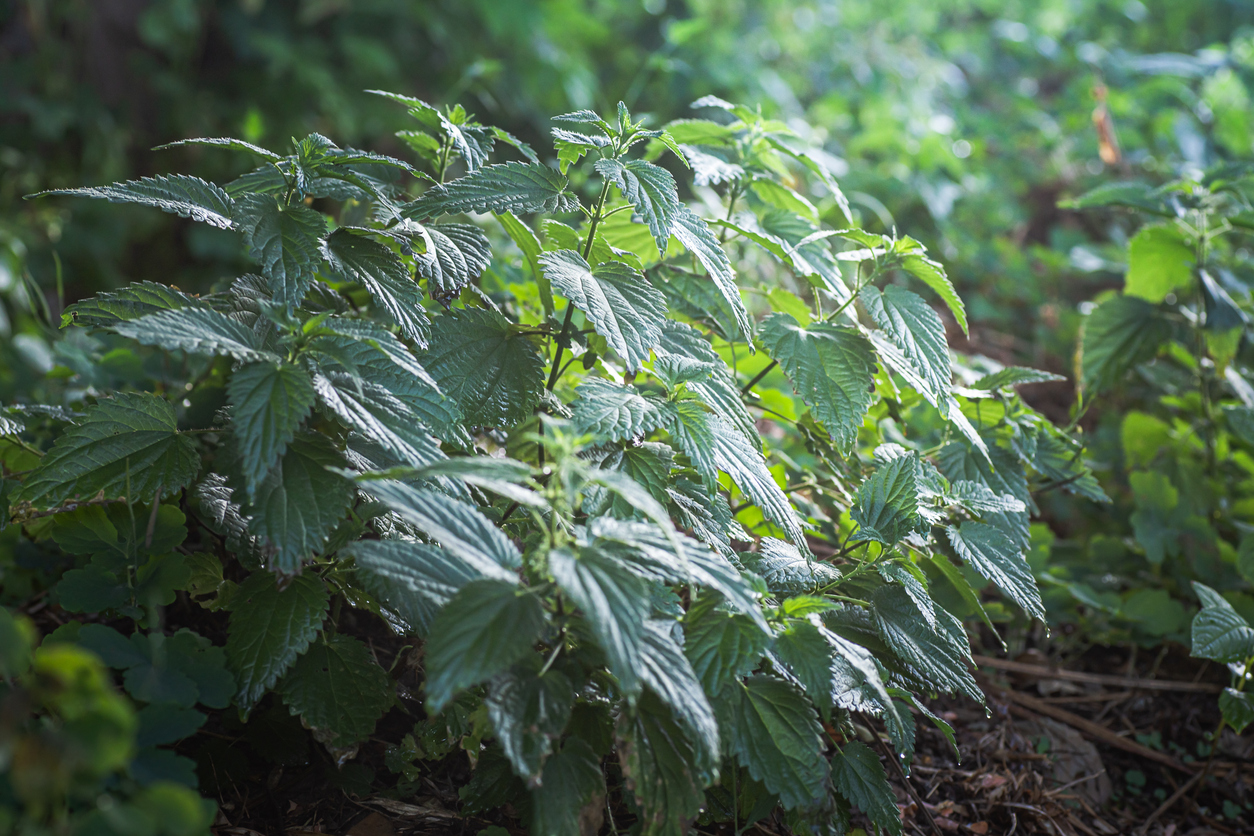
Considered a weed by some, dead nettle has some beneficial properties when planted next to potatoes. It forms a useful ground cover, helping to crowd out other weeds by outcompeting them for resources such as water and sunlight. This reduces the amount of weeding you’ll have to do in your garden. As a bonus, purple dead nettle has a beautiful purple flower that attracts pollinators such as bees.
Best For: Keeping other weeds out of a garden bed and growing flowers that attract pollinators.
Our Recommendation: Get dead nettle seeds at Amazon for $8.97
Celery (Apium graveolens)
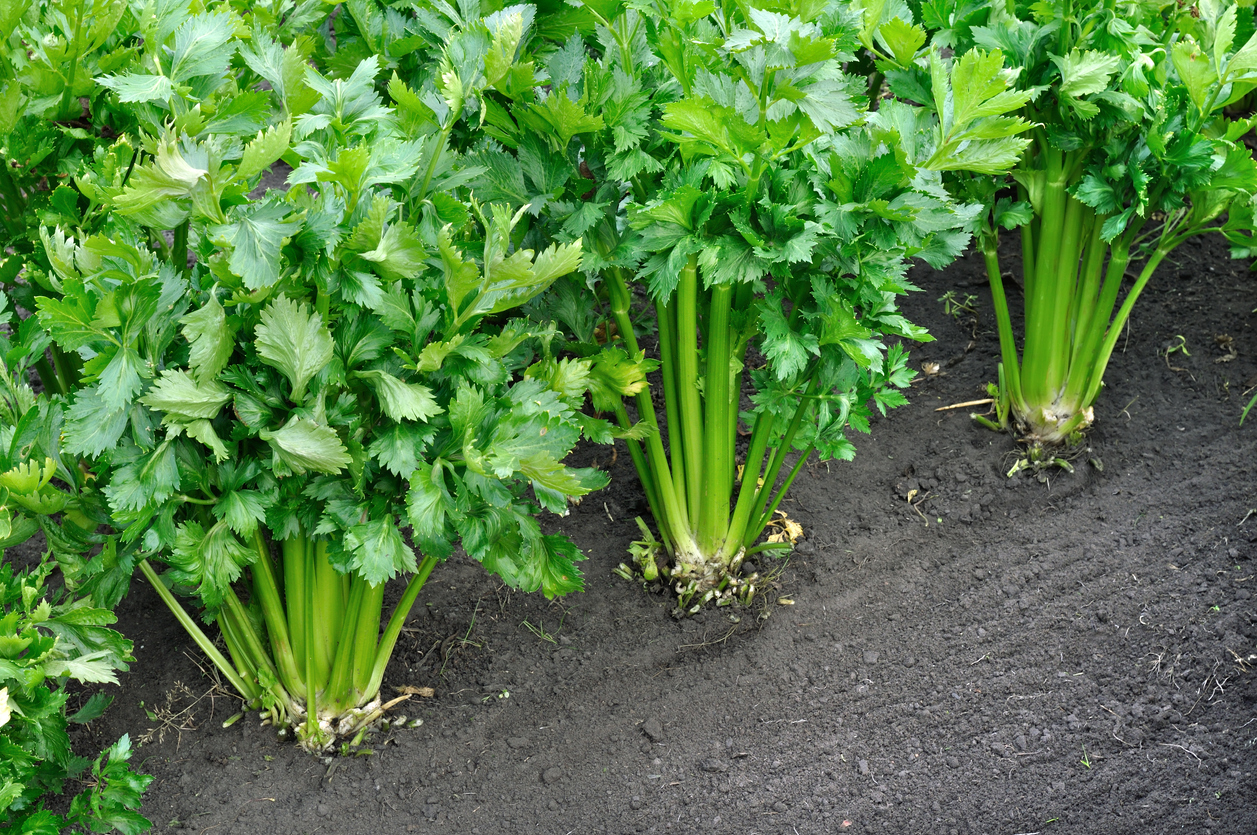
In general, gardeners should place plants known to be beneficial for one another within two or three rows of each other. Companion gardening using celery next to potatoes enhances the top areas of your garden soil, as shallow celery roots help break up the soil. Fertile soil means better potatoes, so consider celery a crunchy addition to the potato patch in your garden.
Best For: Enhancing the shallower areas of your garden soil next to potatoes.
Our Recommendation: Get celery seeds at Jung Seed for $2.25
Vetch (Vicia spp.)
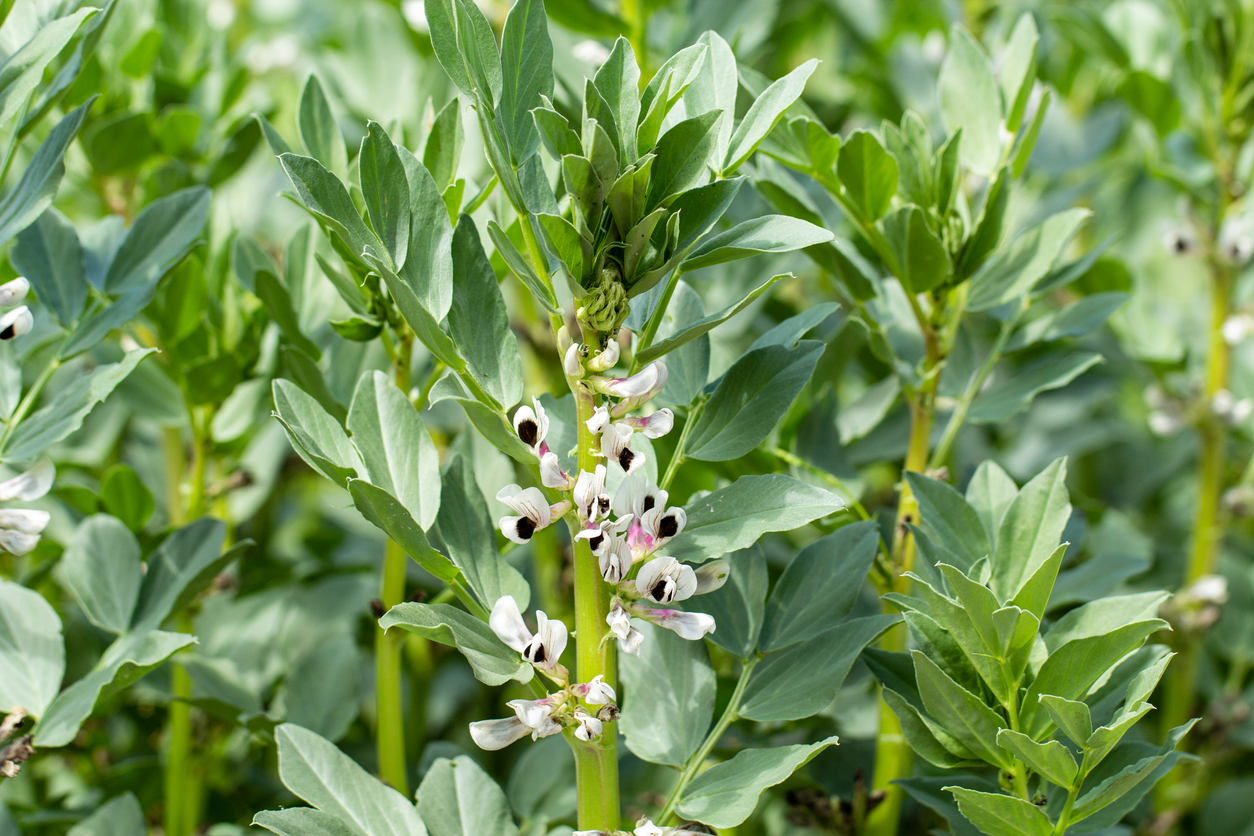
Considered a weed by some (and invasive in some areas), vetch is recommended for companion planting with potatoes. When grown alongside potatoes, vetch has several benefits. It fixes nitrogen from the air, helping to improve soil fertility. Additionally, vetch can help reduce the wind erosion of soil. It also acts as an excellent green manure that can be tilled back into the soil for further nutrient enhancement.
Best For: Being a source of green manure that fixes nitrogen and crowds out other weeds near potatoes.
Our Recommendation: Get hairy vetch seeds at American Meadows for $27.95
Alyssum (Lobularia maritima)
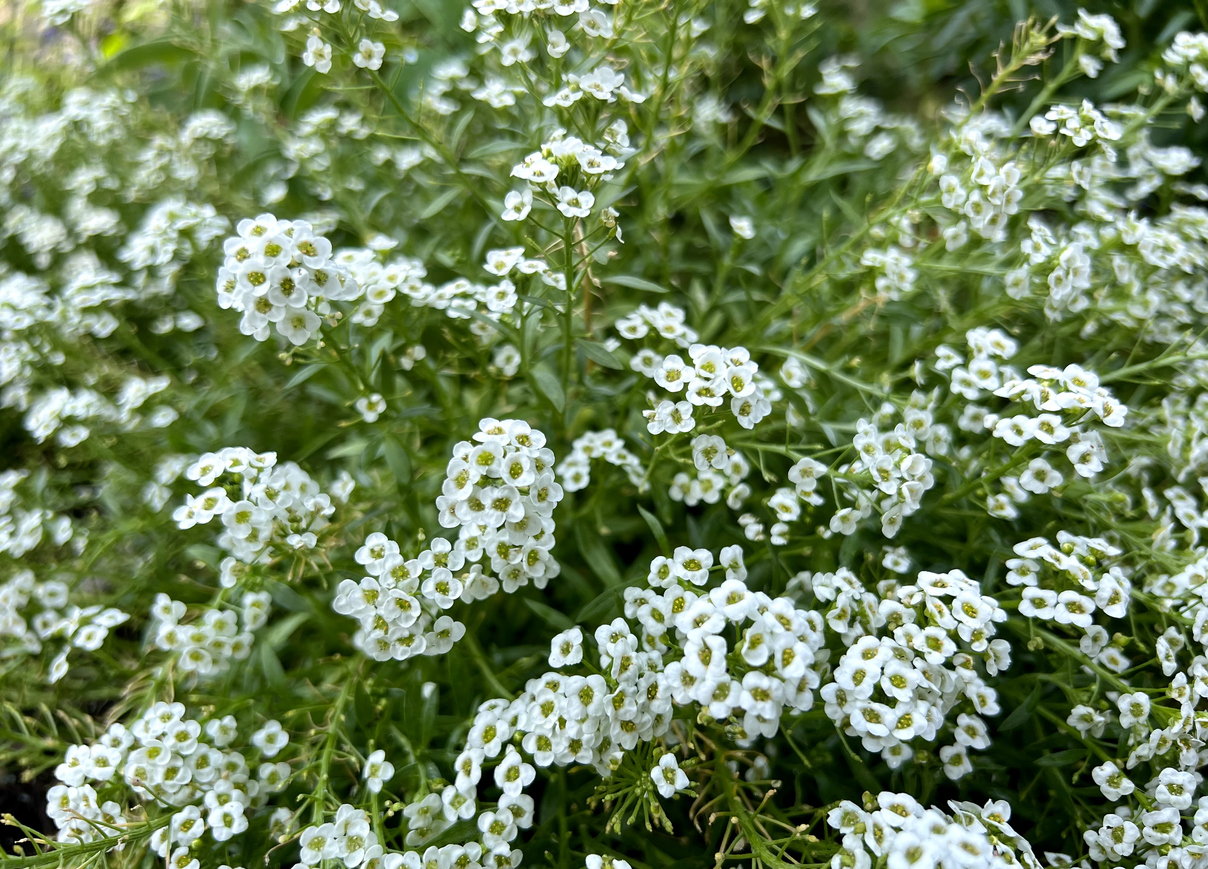
This pretty flower provides ground cover for areas next to potatoes. As a potato companion plant, it serves as a green mulch that helps to prevent weeds from growing while enhancing the moisture-retaining properties of soil. Additionally, alyssum is known to attract pollinators and other beneficial insects.
Best For: Being a low-maintenance companion plant for potatoes that crowds out weeds and enhances soil moisture
Our Recommendation: Get alyssum seeds at Jung Seed for $2.25
5 Plants Never to Grow Near Potatoes
Potatoes are a nightshade plant, an important consideration when choosing vegetable companion planting. According to Zondag, “The reason you don’t plant other members of the same family is the members of the nightshade family are susceptible to the same diseases and may create a situation where the diseases could spread from one member of that family to the other.” For this reason, separate your nightshade plants from each other and avoid growing the same plant on the same ground 2 years in a row.
- Tomatoes: Make sure your potatoes and tomatoes are at least two to three rows apart.
- Peppers: Can attract identical insects that are not beneficial.
- Eggplant: This nightshade plant can cause the same soil diseases as potatoes.
- Okra: This plant has the same genetics as potatoes, so it is susceptible to similar diseases.
- Tomatillos: Not a great companion due to being vulnerable to the same pests.

